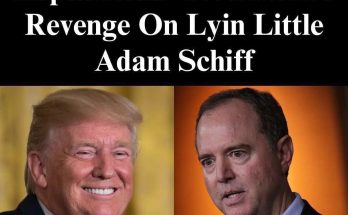Democrats Face Intensifying Pressure as Government Shutdown Enters Its Fourth Week
As the U.S. government shutdown nears the one-month mark, tension within the Democratic Party has reached a fever pitch, highlighting the high stakes of political maneuvering in an already volatile election year. Lawmakers, staffers, and party leaders find themselves navigating a landscape where every decision is scrutinized, and every delay carries tangible consequences. Recent polling indicates a notable shift in public sentiment: an increasing number of Americans now hold Senate Democrats primarily responsible for the ongoing stalemate, reversing earlier perceptions that had leaned toward Republicans or remained evenly split.
The mounting pressure is not just political—it is personal and immediate. For federal employees, contractors, and union members, the shutdown has morphed from abstract debate to daily crisis. Paychecks are delayed, rent and grocery bills pile up, and families face uncertainty about their basic needs. Across the country, stories emerge of households cutting back on essentials, parents juggling childcare without steady income, and local communities stepping in to fill gaps. Nonprofits, food banks, and support organizations report surges in demand as federal workers seek temporary relief, highlighting the ripple effects of a stalled government on the broader public.
Inside Congress, Democratic leaders are weighing a series of high-risk strategies. Some advocate advancing partial funding bills to restore pay for essential workers and maintain critical programs, while others push for targeted emergency appropriations to safeguard services like SNAP, WIC, and Medicaid. Yet each option carries political peril: concessions could be portrayed as weakness, while delays exacerbate public frustration. Internal debates reflect a fundamental tension—how to demonstrate governance and responsibility while maintaining credibility with voters in a contentious political climate.
Meanwhile, Republican leaders have amplified their messaging, framing Senate Democrats as obstructionists responsible for the ongoing shutdown. GOP public statements underscore service interruptions, delayed benefits for veterans, and the economic consequences of a frozen federal apparatus. Even moderate Democrats acknowledge that public perception is deteriorating; the longer the shutdown drags on, the greater the risk of lasting political fallout.
Economists warn of compounding economic consequences. Each additional week of government inactivity undermines consumer confidence, slows spending, and leaves businesses dependent on federal contracts in limbo. Regional economies feel the strain as small businesses wait for payments, local governments adjust to reduced support, and community services strain under increased demand. Beyond the financial implications, the shutdown is a human story—families struggling, students awaiting loans, and vulnerable populations experiencing delayed access to food, healthcare, and housing support.
The standoff has also become a measure of governance. Democracies rely on leaders’ ability to negotiate, compromise, and act in the public interest. Prolonged stalemates reveal the fragility of these systems, where political brinkmanship imposes real human costs. Citizens watching from homes and social media express frustration with visible dysfunction, yet the broader consensus underscores the need for deliberate, effective solutions rather than hasty concessions.
The question facing both parties is whether someone will act—not for political gain, but for public service. Resolving the shutdown requires decisive leadership, meaningful compromise, and recognition that restoring trust is as urgent as reopening government functions. Federal employees need their paychecks, critical programs require funding, and communities demand stability. Without action, social, economic, and political consequences will continue to mount, leaving lasting scars on both citizens and institutions.
As the shutdown stretches into weeks, its human toll remains stark. Parents juggle childcare and work without reliable income, students await crucial federal aid, and families dependent on social programs face prolonged uncertainty. The economic strain extends to small businesses, contractors, and local governments, while the political theater of blame overshadows the urgent needs of citizens.
Yet opportunities for leadership persist. Lawmakers have a chance to demonstrate that governance can prevail over partisanship. Even incremental resolutions could restore paychecks, reopen essential services, and signal to the public that elected officials can prioritize the common good. In this context, the shutdown serves as a test of resilience—for government, for communities, and for the broader democratic system.
Ultimately, the government shutdown is more than a political standoff. It is a measure of institutional functionality, community resilience, and accountability. For the families, workers, and communities affected nationwide, the hope is that lawmakers will break the deadlock, restore essential services, and reaffirm the trust that underpins a functioning democracy. The stakes—human, economic, and political—could not be higher.

